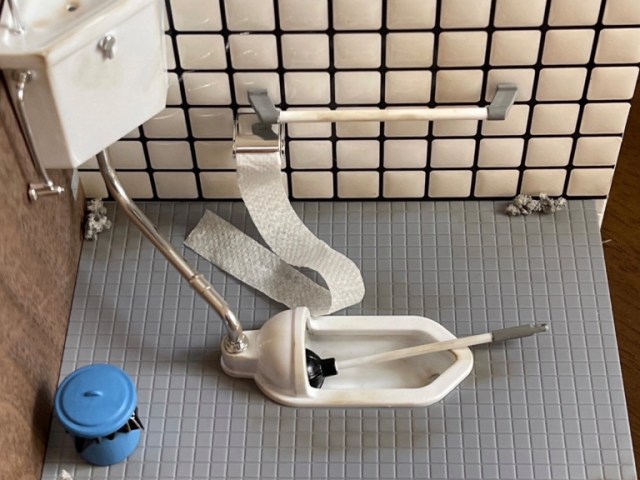
That ain’t just nostalgia our toilet is stained with.
When you think of plastic models from Japan, odds are your first mental image is of a giant anime robot, or maybe you’re a sophisticated and knowledgeable individual (a safe guess, since you’re reading SoraNews24) and so you’re aware of such innovative kits as the Cup Noodle model or the 366-piece sushi one.
But today we’re delving into an especially strange part of the plastic model world by building a Japanese toilet.
To clarify, we’re not building one of those fancy, hi-tech toilets that squirt out a stream of warm water to wash your backside for you. Those are called “washlets,” but what we’re working with is a washiki benjo, a.k.a. an old-school squat toilet, with manufacturer Milestone’s “Our 1/12-scale Japanese-style Toilet” kit.
The inclusion of a specific scale makes it easy to use the completed restroom as a backdrop for displaying anime character figurines, but we’re focusing on the kit itself. While painting is recommended, it’s not an absolute must, since the white plastic pieces look reasonably enough like the color of bathroom fixture porcelain, and the pieces for the various bits that would be metallic on a real toilet are a convincing silver.
Oftentimes, finishing a model but having pieces left over means you made a mistake somewhere, but it’s not a cause for concern with the Our 1/12-scale Japanese-style Toilet. There are three different styles you can pick between when building (flat-wall water tank, corner-wall water tank, and no exposed tank), and since the kit includes pieces for all three types, you won’t be using them all at any single time.
Something that’s really impressive is that the designers didn’t just focus on the externally visible parts. Lift off the cover for a water tank, for example, and you’ll see that even some of the internal bits have been molded.
You also get some important accessories, like a roll of toilet paper, plunger, and trash can (shown here after we applied some paint and magic marker coloring).
The 1,980-yen (US$19) kit does require some gluing, but it didn’t take us long to put everything together. However, while the toilet is convincingly realistic, the pure-white walls looked a little unnatural.
They were just a little too pristine and plasticky. So to counter this, we swung by 100 yen shop Seria, which has a great craft corner, and some imitation tile sticker sheets.
Then, for even more immersion, we hit up the hobby shop and picked up some of Tamiya’s Weathering Master pigment.
The pigment comes in an eye shadow-like tray, and ostensibly is for adding the effect of sand or mud on machinery. However, you can also blend the colors together to get the thin layer of grime you’ll see in an old, water-stained bathroom.
Squat toilets are becoming less and less common in Japan, and a lot of the ones in service are legacy toilets in less affluent schools, train stations, or parks and other public facilities.
So when you see one, there’s a good chance it won’t be spotless and shining. It may have been a while since it was even scrubbed.
For the finishing touches, we also left some debris on the floor, plus unspooled the toilet paper enough so that you’d definitely want to throw away the tip before wiping yourself with it.
Ah, that’s the dank, it’ll-have-to-do-in-a-pinch washiki benjo of our memories.
Of course, if you’d like a less disgusting nostalgia trip, there’s always the plastic PlayStation model instead.
Photos ©SoraNews24
● Want to hear about SoraNews24’s latest articles as soon as they’re published? Follow us on Facebook and Twitter!
[ Read in Japanese ]

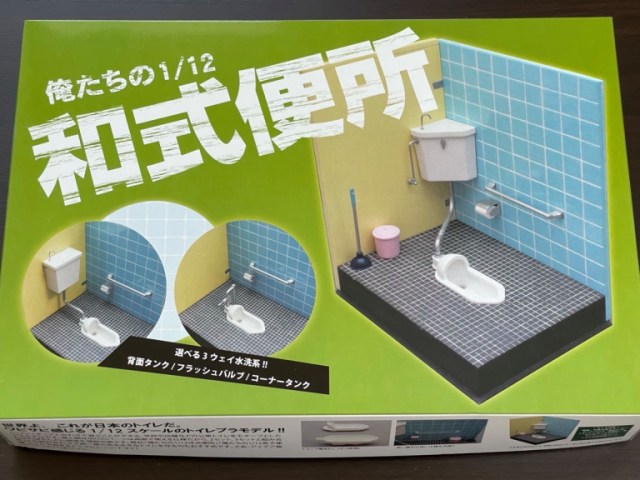
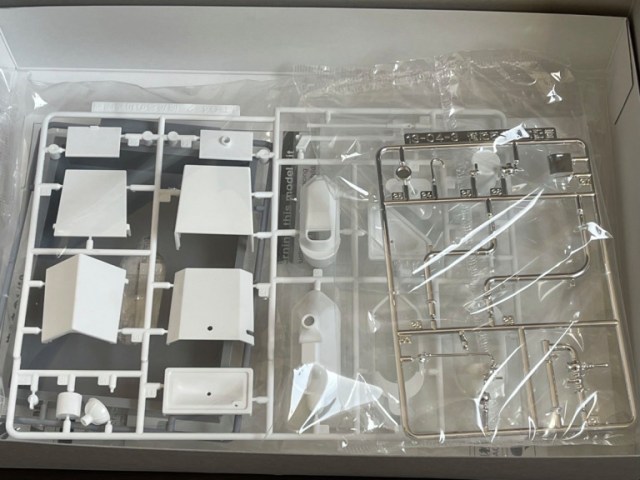
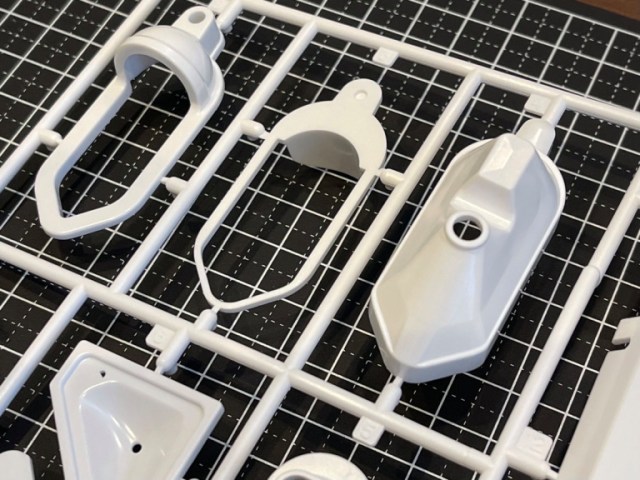
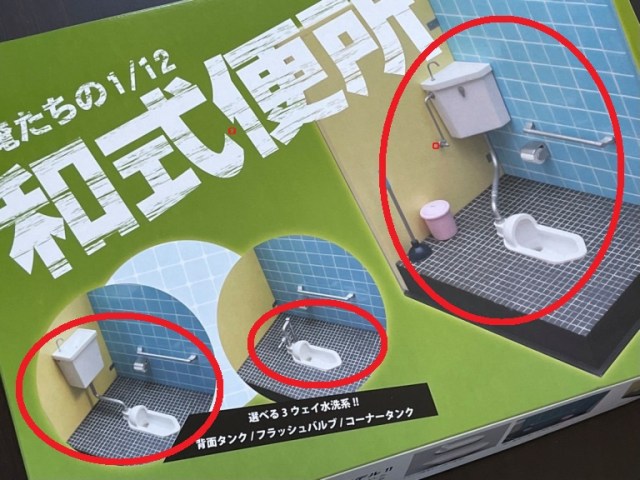
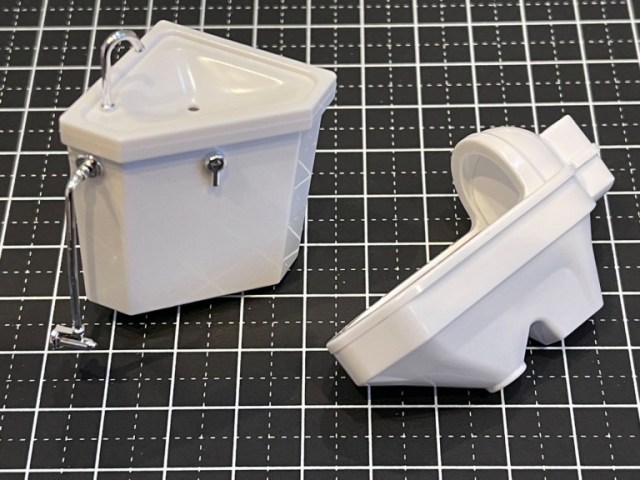
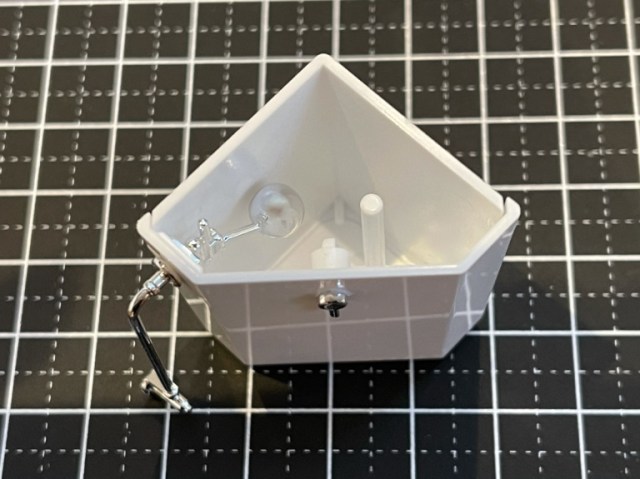
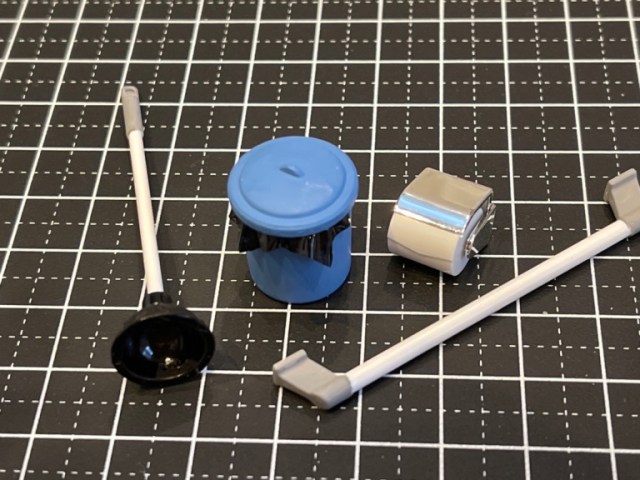
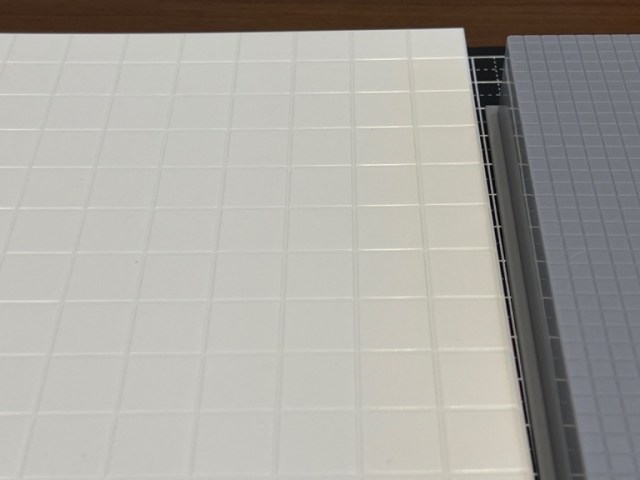
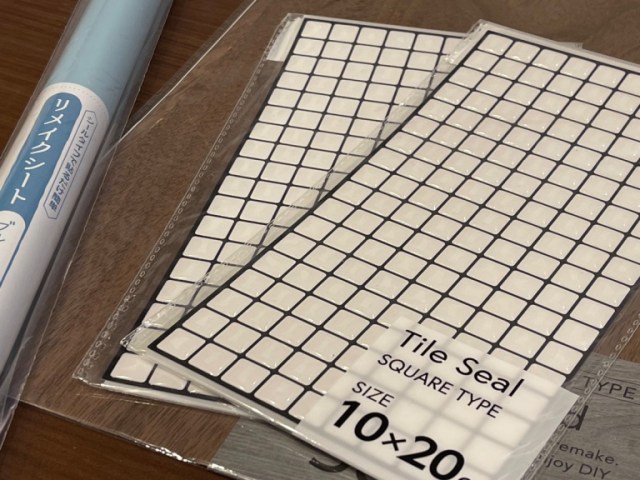
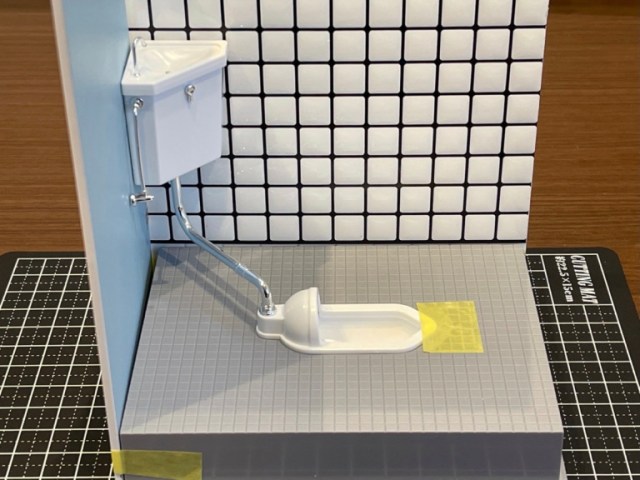
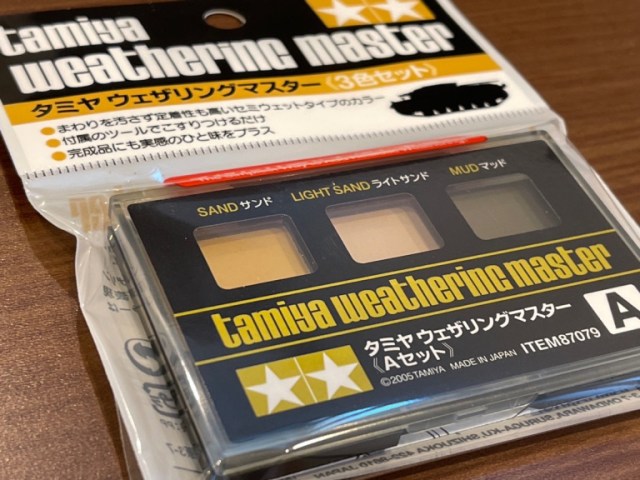
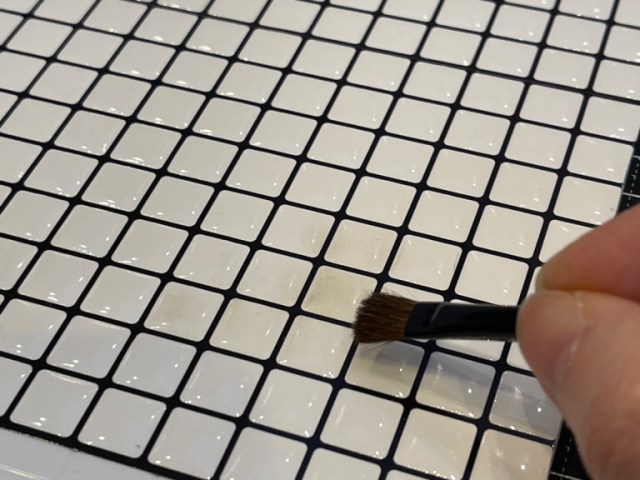
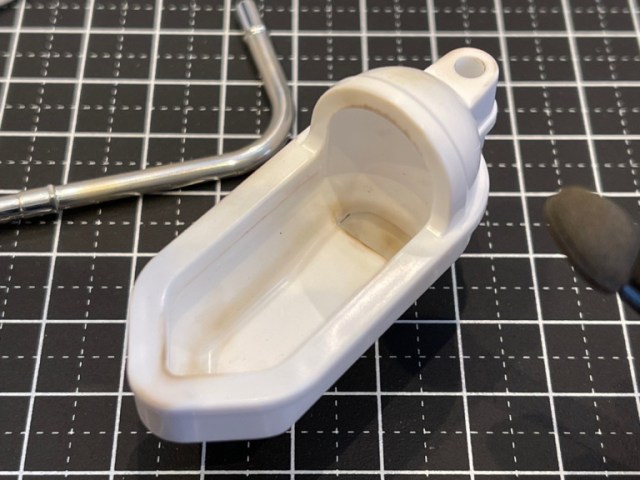
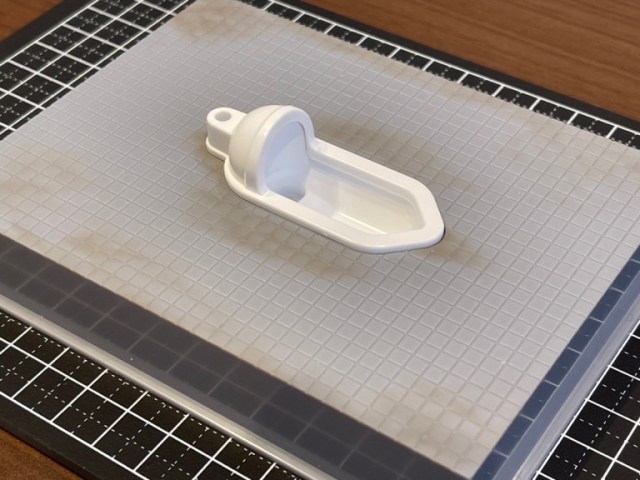
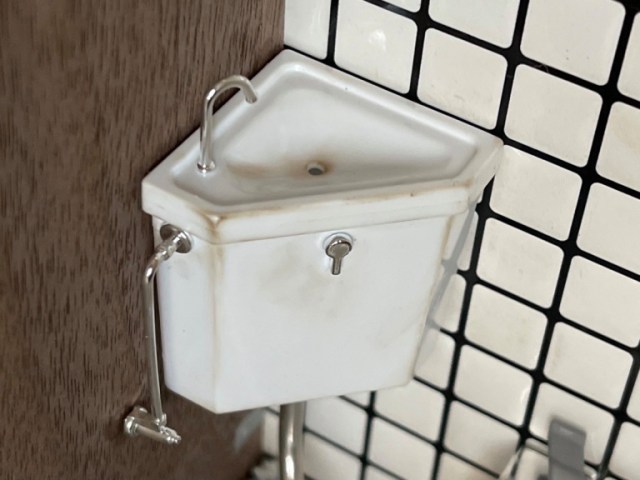
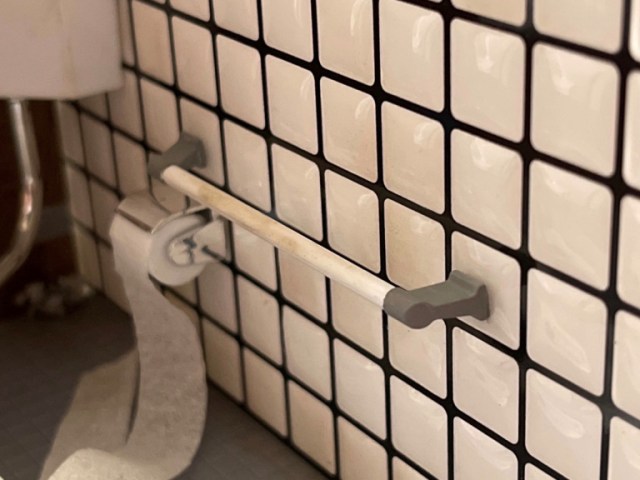
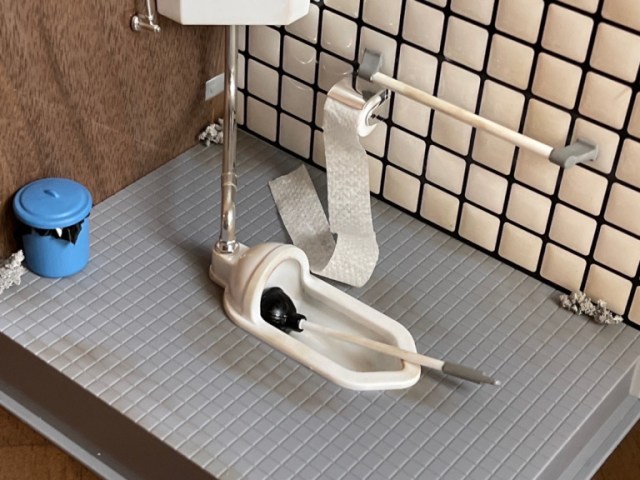
 Squat toilets’ popularity fading as parents call for them to be abolished in Japanese schools
Squat toilets’ popularity fading as parents call for them to be abolished in Japanese schools Do you really need to wear toilet slippers when using the bathroom at home? Japan’s netizens vote
Do you really need to wear toilet slippers when using the bathroom at home? Japan’s netizens vote Crafts for grown-ups! Make your own portable smartphone speakers with toilet paper tubes
Crafts for grown-ups! Make your own portable smartphone speakers with toilet paper tubes New Japanese video game lets you compete in an international toilet racing circuit
New Japanese video game lets you compete in an international toilet racing circuit We have a situation here! Plastic cat found in military model kit
We have a situation here! Plastic cat found in military model kit How to order snacks on a Shinkansen bullet train in Japan
How to order snacks on a Shinkansen bullet train in Japan Demon Slayer: Kimetsu no Yaiba gets new roller coaster attractions and food at Universal Studios Japan
Demon Slayer: Kimetsu no Yaiba gets new roller coaster attractions and food at Universal Studios Japan New samurai glasses are Japan’s latest weird must-have souvenir
New samurai glasses are Japan’s latest weird must-have souvenir Burger King Japan suddenly adds Dr. Pepper and Dr. Pepper floats to its menu nationwide
Burger King Japan suddenly adds Dr. Pepper and Dr. Pepper floats to its menu nationwide Nintendo history you can feel – Super NES, N64, and GameCube controllers become capsule toys
Nintendo history you can feel – Super NES, N64, and GameCube controllers become capsule toys High-fashion Totoro cuddle purse is like an elegant stroll in the forest【Photos】
High-fashion Totoro cuddle purse is like an elegant stroll in the forest【Photos】 Japan’s new difficult-to-drink-from beer glass protects your liver, but it’s a brutal experience
Japan’s new difficult-to-drink-from beer glass protects your liver, but it’s a brutal experience Kyoto Tower mascot termination reveals dark side behind cute Japanese characters
Kyoto Tower mascot termination reveals dark side behind cute Japanese characters New Pokémon ice cream, dessert drinks, and cool merch coming to Baskin-Robbins Japan【Pics】
New Pokémon ice cream, dessert drinks, and cool merch coming to Baskin-Robbins Japan【Pics】 To combat declining birth rate, Japan to begin offering “Breeding Visas” to foreigners
To combat declining birth rate, Japan to begin offering “Breeding Visas” to foreigners Hello, cosmetics! Clinique teams up with Hello Kitty this summer for first-time collaboration
Hello, cosmetics! Clinique teams up with Hello Kitty this summer for first-time collaboration “The most Delicious Cup Noodle in history” – Japan’s French Cup Noodle wins our heart【Taste test】
“The most Delicious Cup Noodle in history” – Japan’s French Cup Noodle wins our heart【Taste test】 Starbucks releases a cute Frappuccino and Unicorn Cake…but not in Japan
Starbucks releases a cute Frappuccino and Unicorn Cake…but not in Japan McDonald’s Japan’s Soft Twist Tower: A phantom ice cream only sold at select branches
McDonald’s Japan’s Soft Twist Tower: A phantom ice cream only sold at select branches Yabai Ramen: What makes this Japanese ramen so dangerous?
Yabai Ramen: What makes this Japanese ramen so dangerous? Finally! Nintendo Japan expands Switch 8-bit controller sales to everybody, Online member or not
Finally! Nintendo Japan expands Switch 8-bit controller sales to everybody, Online member or not Japanese government wants to build luxury resorts in all national parks for foreign tourists
Japanese government wants to build luxury resorts in all national parks for foreign tourists 10 things you should buy at 7-Eleven in Japan
10 things you should buy at 7-Eleven in Japan Studio Ghibli releases anime heroine cosplay dresses that are super comfy to wear
Studio Ghibli releases anime heroine cosplay dresses that are super comfy to wear Woman charged for driving suitcase without a license in Osaka
Woman charged for driving suitcase without a license in Osaka Studio Ghibli unveils My Neighbour Totoro miniature house model
Studio Ghibli unveils My Neighbour Totoro miniature house model Kyoto experiencing problems with foreign tourists not paying for bus fares, but not on purpose
Kyoto experiencing problems with foreign tourists not paying for bus fares, but not on purpose Fighting mild hunger with a Japanese soda that turns into jelly in the stomach【Taste test】
Fighting mild hunger with a Japanese soda that turns into jelly in the stomach【Taste test】 Studio Ghibli’s Howl’s Moving Castle tapestry unveiled in Japan for first time
Studio Ghibli’s Howl’s Moving Castle tapestry unveiled in Japan for first time McDonald’s new Happy Meals offer up cute and practical Sanrio lifestyle goods
McDonald’s new Happy Meals offer up cute and practical Sanrio lifestyle goods Sales of Japan’s most convenient train ticket/shopping payment cards suspended indefinitely
Sales of Japan’s most convenient train ticket/shopping payment cards suspended indefinitely Sold-out Studio Ghibli desktop humidifiers are back so Totoro can help you through the dry season
Sold-out Studio Ghibli desktop humidifiers are back so Totoro can help you through the dry season Japanese government to make first change to romanization spelling rules since the 1950s
Japanese government to make first change to romanization spelling rules since the 1950s Foreigner’s request for help in Tokyo makes us sad for the state of society
Foreigner’s request for help in Tokyo makes us sad for the state of society Ghibli founders Toshio Suzuki and Hayao Miyazaki contribute to Japanese whisky Totoro label design
Ghibli founders Toshio Suzuki and Hayao Miyazaki contribute to Japanese whisky Totoro label design Doraemon found buried at sea as scene from 1993 anime becomes real life【Photos】
Doraemon found buried at sea as scene from 1993 anime becomes real life【Photos】 Tokyo’s most famous Starbucks is closed
Tokyo’s most famous Starbucks is closed Princesses, fruits, and blacksmiths: Study reveals the 30 most unusual family names in Japan
Princesses, fruits, and blacksmiths: Study reveals the 30 most unusual family names in Japan Japanese poopers show strong enthusiasm for new portable banana toilet【Videos】
Japanese poopers show strong enthusiasm for new portable banana toilet【Videos】 We travel to Fuji to see how they make Japanese toilet paper
We travel to Fuji to see how they make Japanese toilet paper Poop Flinging Game – Literal weird crap from Japanese capsule toy machines【Photos】
Poop Flinging Game – Literal weird crap from Japanese capsule toy machines【Photos】 Why settle for a radio-controlled car when you can have an RC toilet instead? 【Video】
Why settle for a radio-controlled car when you can have an RC toilet instead? 【Video】 Japan travel warning: These are not baby wipes, so don’t use them to wipe your butt
Japan travel warning: These are not baby wipes, so don’t use them to wipe your butt Newest Gundam anime robot model kit is made with green tea leaves, smells like green tea
Newest Gundam anime robot model kit is made with green tea leaves, smells like green tea This lucky bag of anime models is also a decades-long history lesson for our mecha newbie
This lucky bag of anime models is also a decades-long history lesson for our mecha newbie Genius Korean method for unclogging toilets is probably more trouble than it’s worth
Genius Korean method for unclogging toilets is probably more trouble than it’s worth This crazy plastic sushi model has 366 pieces, which actually makes a lot of sense【Photos】
This crazy plastic sushi model has 366 pieces, which actually makes a lot of sense【Photos】 The top 10 instances when Japanese people feel thankful to be Japanese
The top 10 instances when Japanese people feel thankful to be Japanese Presenting the Kit Kat Chocolatory Moleson — the first ever Kit Kat with toppings!
Presenting the Kit Kat Chocolatory Moleson — the first ever Kit Kat with toppings! Insanely detailed 900-plus-piece Japanese model kit is…a 1:1-scale sesame dumpling【Photos】
Insanely detailed 900-plus-piece Japanese model kit is…a 1:1-scale sesame dumpling【Photos】 Everything you think you know about your washlet toilet is wrong
Everything you think you know about your washlet toilet is wrong Japanese public toilet in Tokyo is more like a fancy restaurant than a restroom
Japanese public toilet in Tokyo is more like a fancy restaurant than a restroom Animated toilet seats turn your bathroom into zen garden, bamboo forest, and more【Pics, Vids】
Animated toilet seats turn your bathroom into zen garden, bamboo forest, and more【Pics, Vids】
Leave a Reply